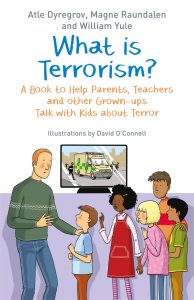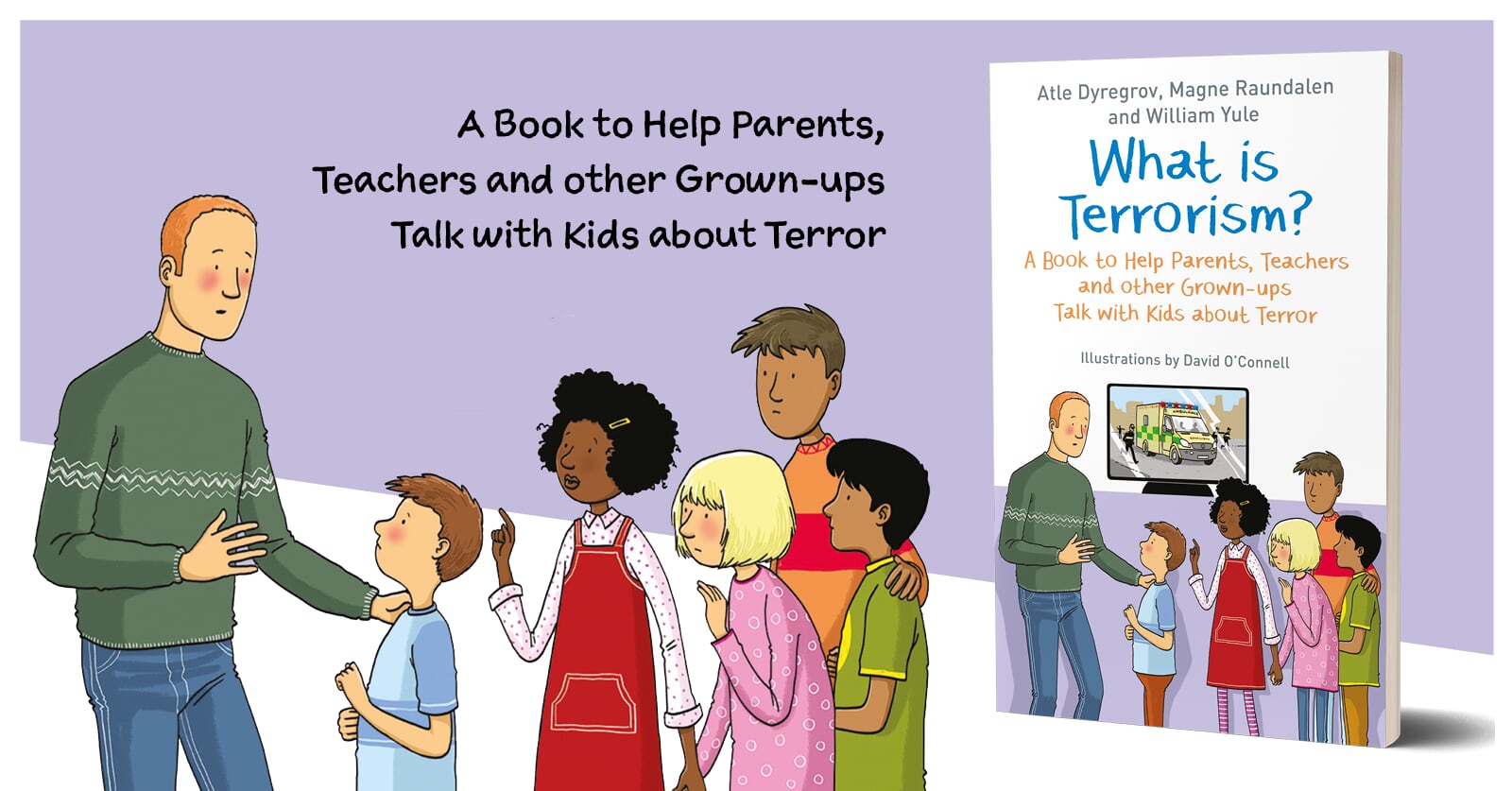One thing is for sure, terror will strike again, and it will feature massively in the media. Children will see and hear about it and they will observe adults’ reactions. They may talk among themselves about it and they may fantasize about what can happen to themselves and their loved ones. They can see anger, sadness and fear in their social surroundings, and they can experience it themselves. Children take in what happens around them, whether adults like it or not. We can pretend they do not understand, that their innocence protects them and that what is out of sight is out of mind. That is often not so. From years of experience and research we know that the adult world impacts on children, and that modern media increases their exposure.
Not so many years back adults, lay people and professionals used to think that children did not understand death. It was not recommended to discuss death with them, children were best kept uninformed. We also shielded them from conversations about physical abuse, sexual abuse or bullying. We wanted to keep our illusion of innocent children living in a secluded world away from the harsh reality of adults.
Gradually, we have realised that children take in much more of the world around them and that we need to talk with them if they are to make sense of this world. We cannot leave them alone to cope with their thoughts and reactions. If, for example, there is a suicide in a child’s family or social environment (i.e. parent of a classmate), it may be easier for adults to keep this grim reality away from a child in the short run, only to understand that over time this creates more problems. More and more we have come to understand that open, honest information about difficult issues usually is best for children and keeps fantasies at bay. Good, honest information to help them understand, combined with care and support and explanations of the feelings they may encounter, help them cope with personally difficult situations and events on the world scene.
Terror has stricken many cities in Europe over the last few years. Be that shooting, bombs, vehicles driving into crowds, stabbings or other attacks. The massive media attention means that in some regard every family will be affected. Such events make children fear for their loved ones and themselves. Because such events are so extraordinary we also overestimate the possibility that ourselves or our loved ones will be there when they happen. We may become afraid of crowds and stay away from situations that we perceive as dangerous, however low our chance of experiencing this actually is.
Therefore, it becomes important to address terrorism directly by explaining terrorism to children. We may have to find the right time and place to do this, but as adults we cannot abdicate conversations we need to have. This will not plant fear or ideas in their minds, it will calm them down and provide a cognitive framework for understanding. Having worked with bereavement, crises and disasters for 40 years, I have learned that adults very often underestimate the need for talking with children. Both clinical experience and research show us that good information and explanations of events has a profound calming effect on most people.
Written by Professor Atle Dyregrov of the Center for Crisis Psychology, University of Bergen, Norway, and one of the authors of What is Terrorism?
 What is Terorrism? is an accessible and straightforward book explaining terrorism to children age 7+. Designed to be read by an adult to a child, it reassures and alleviates worries children might have after media exposure on this topic. Written by internationally renowned child psychologists, it also includes advice for adults to provide open, honest guidance.
What is Terorrism? is an accessible and straightforward book explaining terrorism to children age 7+. Designed to be read by an adult to a child, it reassures and alleviates worries children might have after media exposure on this topic. Written by internationally renowned child psychologists, it also includes advice for adults to provide open, honest guidance.
